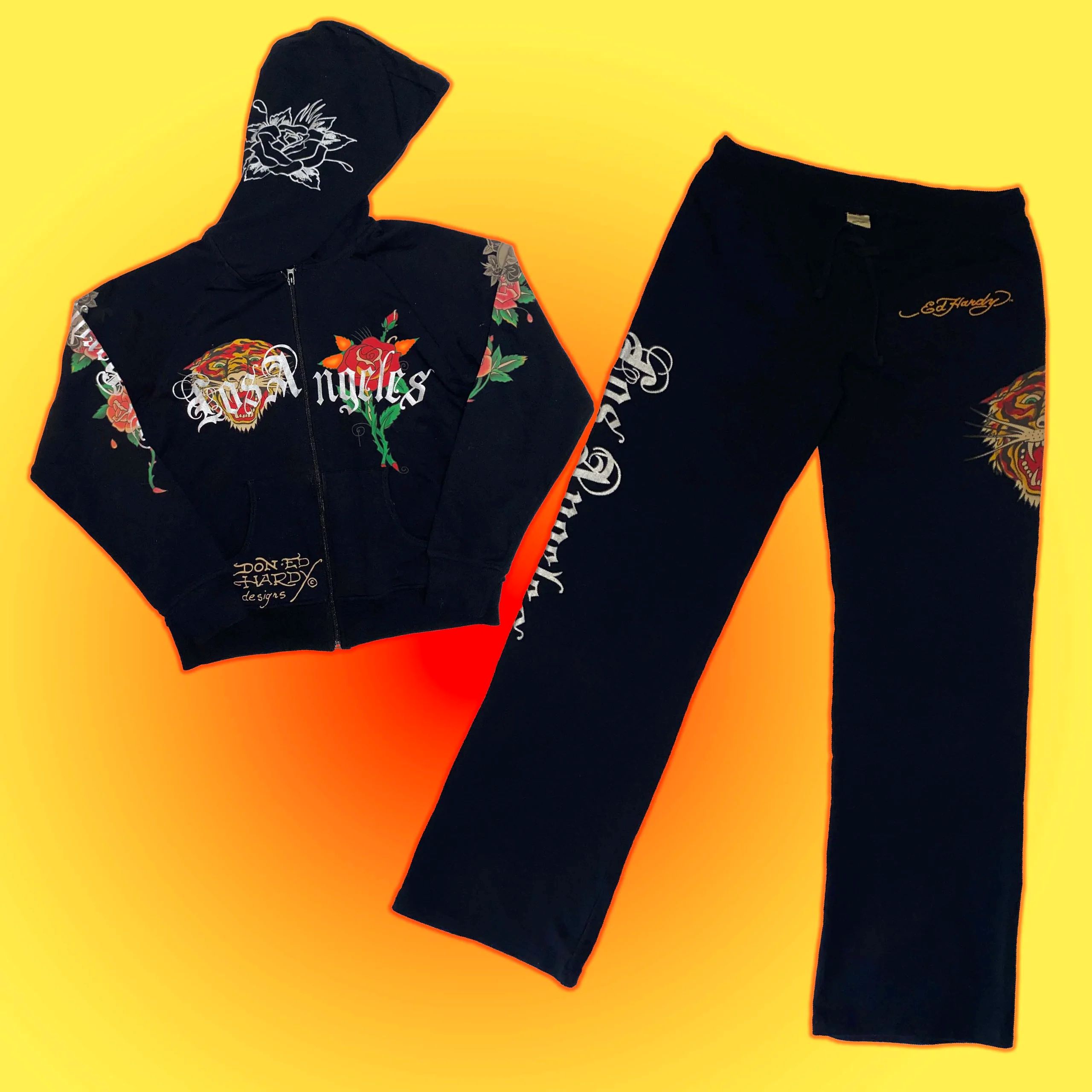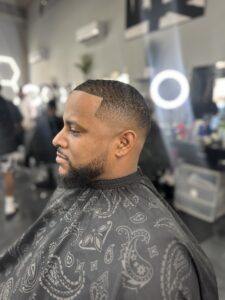Ed Hardy is a name synonymous with bold, vibrant designs that revolutionized the fashion world in the early 2000s. At the heart of this transformation was Don ed hardy tracksuit a renowned tattoo artist whose artwork became the foundation for a global fashion empire. The fusion of tattoo art with fashion couture was a groundbreaking move that redefined how people viewed both tattoos and high-end clothing. Through the Ed Hardy brand, tattoo culture, which was once viewed as rebellious and underground, became a mainstream fashion trend. This blend of art and couture left an indelible mark on the fashion industry and continues to influence style today.
The Origins of Ed Hardy’s Tattoo Art
Don Ed Hardy’s journey into the world of tattoos began long before the fashion brand took off. As a tattoo artist, Hardy was influenced by the traditional American tattoo style and Japanese tattoo techniques. His designs often featured bold imagery like skulls, roses, tigers, and dragons, all with deep symbolism. Hardy’s work stood out for its combination of Eastern and Western art styles, as well as its intricate details and vibrant colors. This unique blend of influences made his tattoos instantly recognizable and respected in the world of body art. Hardy’s ability to create striking, meaningful designs would later become a key element in his fashion brand’s success.
The Vision of Christian Audigier
The turning point in ed hardy jeans career came when Christian Audigier, a French fashion designer, saw the potential in bringing Hardy’s tattoo art to the fashion world. Audigier was known for his work with other popular brands like Von Dutch, and he saw an opportunity to merge Hardy’s iconic artwork with fashion. This vision led to the creation of the Ed Hardy brand in 2002, with Audigier as the driving force behind its success. Audigier understood how to market Hardy’s artwork in a way that appealed to a broad audience, particularly celebrities and young consumers who were eager for something bold and different. The combination of Hardy’s artistic vision and Audigier’s marketing genius led to the rapid rise of the Ed Hardy brand.
Tattoos as Wearable Art
What made Ed Hardy stand out in the fashion world was its approach to clothing as wearable art. Hardy’s tattoo designs were not merely printed on fabric; they were showcased as intricate works of art that told a story. ed hardy sweatsuit The clothing featured elaborate designs of classic tattoo imagery, including eagles, skulls, koi fish, and roses. These designs were often embellished with rhinestones and bright colors, creating a visually striking look that was unlike anything else in the fashion industry at the time. This approach helped Ed Hardy carve out a unique niche in the fashion world, appealing to those who wanted to make a statement with their clothing.
The Rise of Ed Hardy in Pop Culture
A key factor in the success of the Ed Hardy brand was its adoption by celebrities. Stars like Madonna, Britney Spears, Paris Hilton, and David Beckham were frequently seen wearing Ed Hardy designs, which helped the brand gain mainstream recognition. The association with celebrities gave Ed Hardy an air of exclusivity and glamour, making it a must-have for fashion enthusiasts in the 2000s. The bold designs became synonymous with celebrity culture, and soon, Ed Hardy clothing was a common sight in music videos, red carpet events, and magazine spreads. The brand’s rise in pop culture helped solidify its place as a fashion powerhouse, with its tattoo-inspired designs becoming a symbol of status and style.
How Ed Hardy Blended Streetwear and High Fashion
One of the most significant contributions of the Ed Hardy brand was its ability to blend streetwear with high fashion. Tattoo art, which had long been associated with counterculture and rebellion, was suddenly being embraced by luxury fashion circles. The Ed Hardy brand brought tattoo culture into the mainstream by making it accessible through fashion, while still maintaining its edge and rebellious spirit. The brand’s clothing appealed to a wide range of consumers, from high-fashion enthusiasts to streetwear fans. By bridging the gap between these two worlds, Ed Hardy played a crucial role in shaping the direction of fashion in the 2000s, and its influence is still seen today in the ongoing crossover between streetwear and luxury fashion.
The Iconic Ed Hardy Aesthetic
The Ed Hardy aesthetic is instantly recognizable for its bold, unapologetic designs. The clothing often featured oversized graphics of tigers, skulls, and other tattoo imagery, along with phrases like “Love Kills Slowly” and “Death Before Dishonor.” These designs were not meant to be subtle—they were meant to stand out. The use of bright colors, intricate details, and flashy embellishments like rhinestones made Ed Hardy clothing a bold fashion statement. This aesthetic appealed to those who wanted to express their individuality and make a statement through their clothing. The brand’s designs were a reflection of tattoo culture’s rebellious, nonconformist attitude, and they allowed people to wear that attitude proudly.
Ed Hardy’s Impact on Fashion Trends
The success of Ed Hardy had a lasting impact on fashion trends, particularly in the realm of graphic-heavy clothing and the blending of art with fashion. The brand helped popularize the idea of fashion as a form of self-expression, much like tattoos themselves. This trend toward bold, statement-making clothing can still be seen today in many fashion brands that embrace graphic designs and loud prints. Ed Hardy’s influence can also be seen in the continued crossover between streetwear and high fashion, as well as the rise of tattoo-inspired designs in various forms of media and art. The brand may have had its peak in the 2000s, but its influence on fashion is undeniable.
The Legacy of Ed Hardy
Though the Ed Hardy brand experienced a decline in popularity in the 2010s, its legacy continues to live on in the fashion world. The brand’s bold designs and fusion of tattoo art with couture set the stage for many of the trends we see today, particularly in the world of streetwear. In recent years, there has been a resurgence of interest in Ed Hardy’s designs, with vintage pieces becoming highly sought after by fashion collectors. This renewed interest speaks to the lasting impact of the brand and its ability to resonate with new generations of fashion enthusiasts. The Ed Hardy brand’s legacy is a testament to the power of blending art with fashion to create something truly unique.









